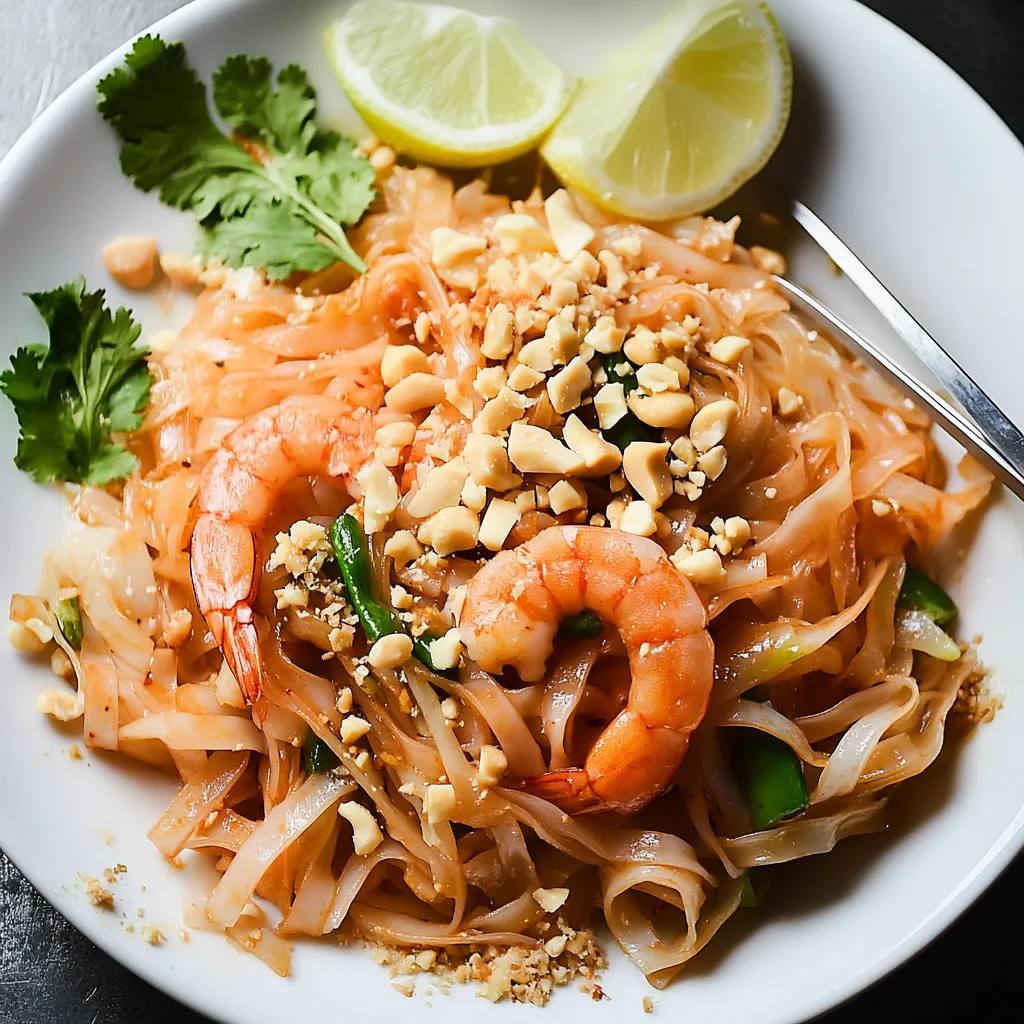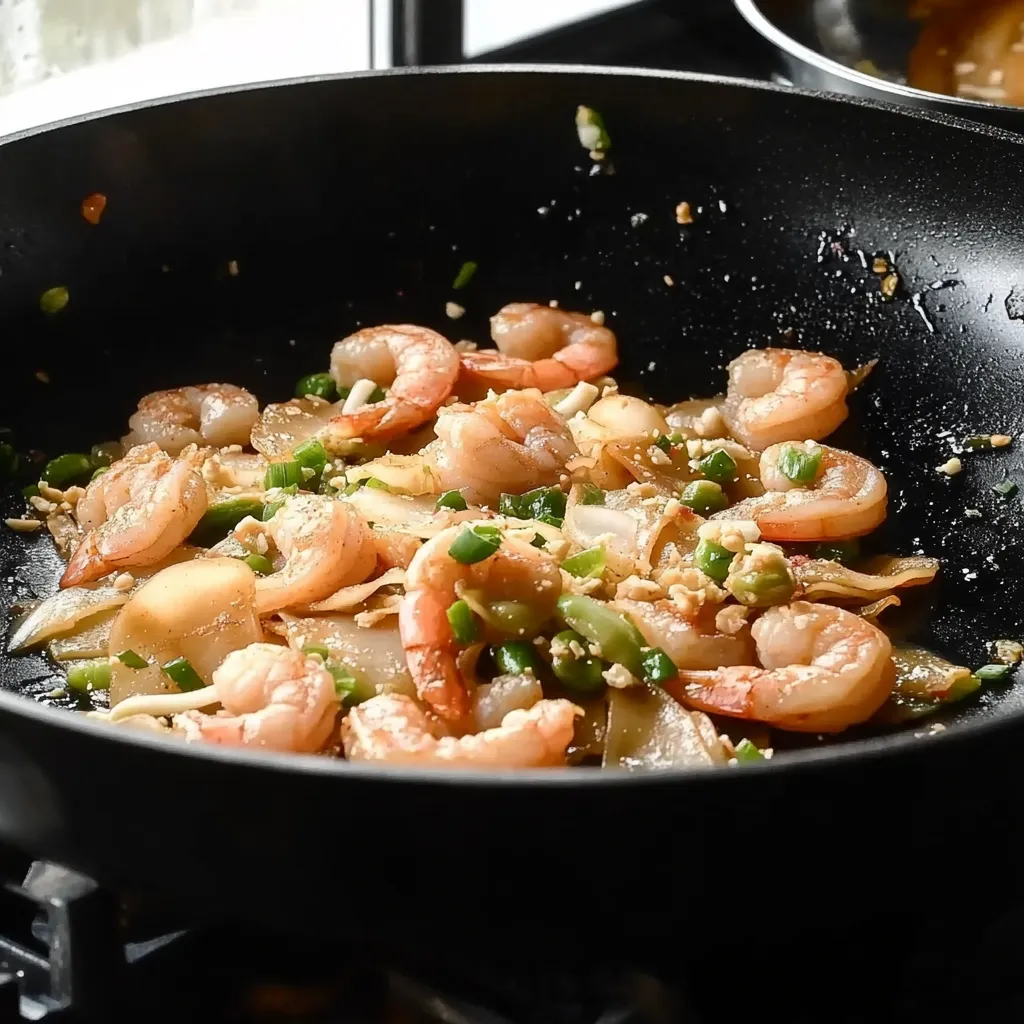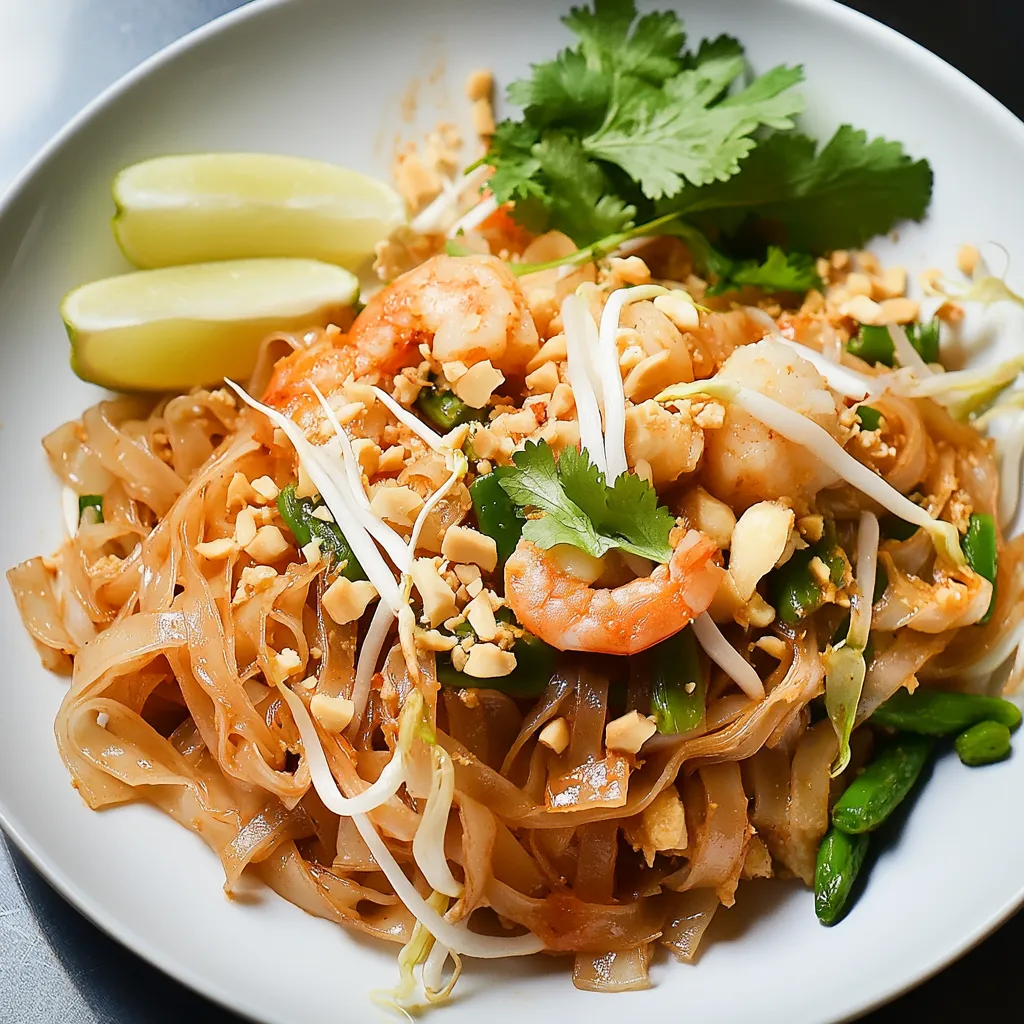 Pin it
Pin it
Soft rice noodles bundled with juicy shrimp and fluffy eggs, all drenched in a well-balanced sweet-tangy sauce make up this streamlined take on Thailand's popular street food favorite. Every bite delivers the perfect mix of soft noodles, crisp veggies, and nutty crunch that makes pad Thai so darn good.
I spent years just ordering pad Thai when eating out until I found out making it myself wasn't hard at all. The trick is getting everything ready before you start, since once you begin cooking, things move fast.
Key Components
- Rice noodles: Go for flat, medium ones that say pad Thai on the package
- Fish sauce: Adds that can't-miss savory depth - grab Thai or Vietnamese kinds
- Ketchup: Makes the right sweet-sour mix without needing to hunt for tamarind
- Shrimp: Pick medium ones that'll cook quick and even
- Fresh bean sprouts: Give that must-have snap and freshness
Directions
- 1. Prep Your Noodles
- Start by dunking rice noodles in super hot water till they're almost done but still a bit firm. They'll finish cooking later, so slightly hard works better than mushy. Cool them with cold water to stop them cooking more.
- 2. Mix Up the Sauce
- Stir together fish sauce, soy sauce, ketchup, and brown sugar in just the right amounts. This mix brings all those yummy sweet, salty, and tangy notes that make pad Thai taste so special.
- 3. Handle Your Proteins
- Cook shrimp first until they turn pink. Take them out and then scramble eggs on their own - keeping everything separate makes sure each bit has the right texture.
- 4. Get Stir-Frying
- Get your pan super hot. Work fast, tossing in noodles and sauce, stirring all the time so nothing sticks. The noodles should soak up sauce all over.
- 5. Put It All Together
- Add your protein back with fresh herbs and bean sprouts. Mix gently so everything combines but still keeps its own texture.
 Pin it
Pin it
I always had amazing Thai restaurants nearby, so I was scared to try making pad Thai at home. But after my Thai buddy showed me these tricks, I realized getting those same tasty flavors is totally doable with a few simple ingredient swaps.
Keeping The Right Heat
Make sure your pan is hot enough that food sizzles when it hits, but not so hot that your sauce burns. If your noodles feel too hard, just splash in a bit of water instead of overcooking them.
Saving Leftovers
This tastes best right away, but you can keep leftovers up to two days. When reheating, add a tiny splash of water to soften the noodles. Throw in fresh bean sprouts and herbs right before you eat.
Protein Swaps
You can easily use chicken cut in thin strips, tofu blocks (squeeze and fry them first), or mix and match proteins,
Making It Your Own
You can tweak the spice by adding more or less chili flakes, throw in extra veggies like thin-cut carrots, or use more eggs if you want a meat-free version.
I've tried making this so many times, and I've learned success comes down to prep work and timing. Getting everything ready before you start cooking means each part stays just right, making pad Thai that's as good as what you'd get at a restaurant. Whether you're new to Thai food or cook all the time, this simple recipe gives you real Thai flavors using stuff you can find at any grocery store.
 Pin it
Pin it
Frequently Asked Questions
- → What if I don't eat shrimp?
- Swap in chicken, tofu, or extra eggs. Adjust the cooking time to suit your pick.
- → Why add ketchup to the sauce?
- It’s not traditional, but ketchup brings the right tanginess and sweetness similar to tamarind paste.
- → What stops the noodles from sticking?
- Don’t soak them too long. Rinse with cold water after draining and cook immediately in the hot pan.
- → Can this dish be made gluten-free?
- Not as is. Replace the soy sauce with tamari and double-check all your sauces.
- → How far ahead can I prep this?
- It’s best fresh. But you can prep ingredients and the sauce earlier for quick assembly later.
